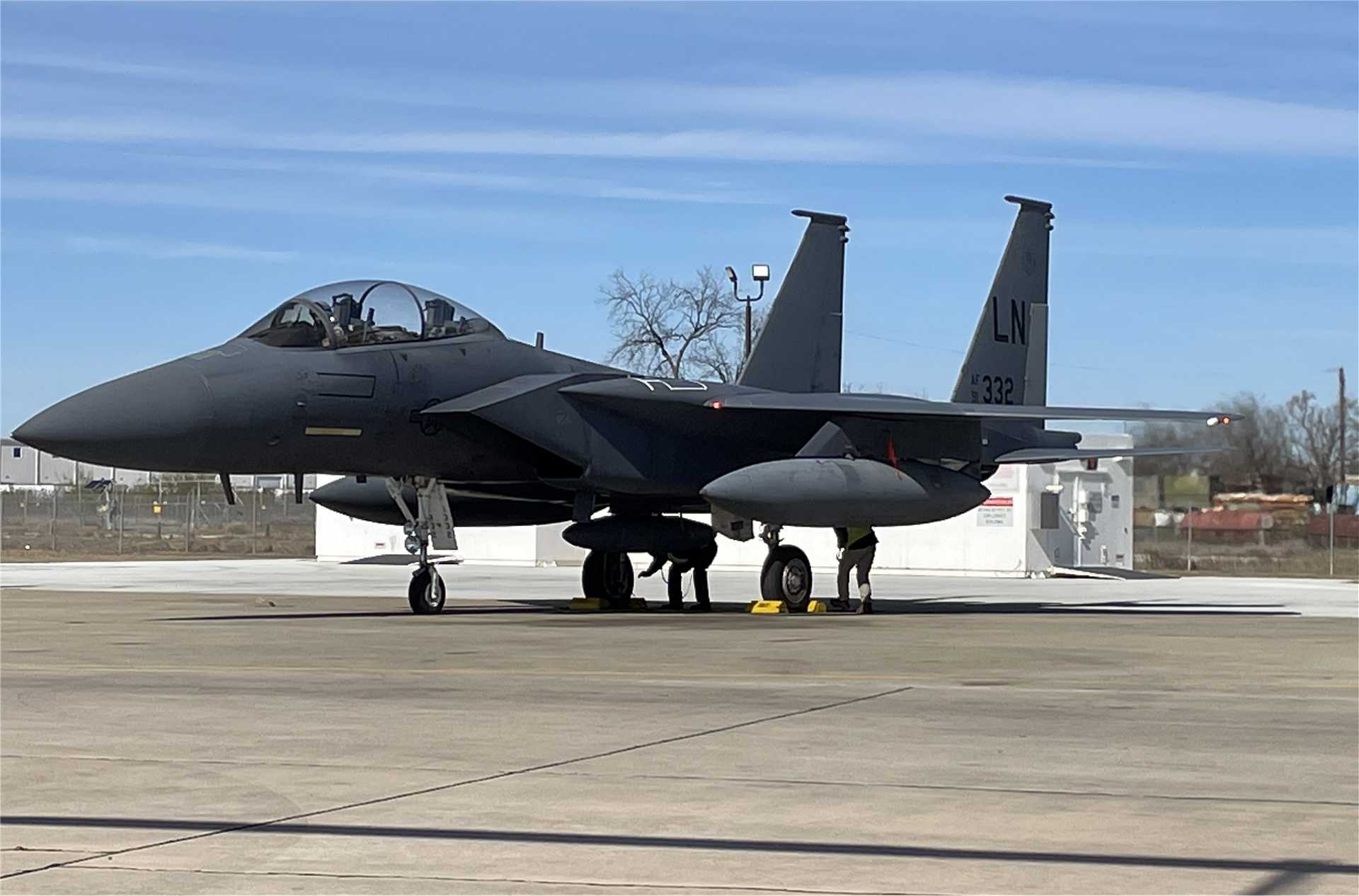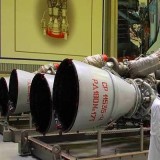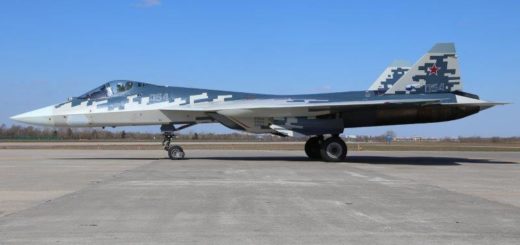Breaking News: First F-15E Fighter Jet with EPAWSS World’s Most Advanced EW System Delivered to US Air Force in UK

{loadposition bannertop}
{loadposition sidebarpub}
On January 17, 2025, the U.S. Air Force achieved a significant milestone in modernizing its F-15E Strike Eagle fleet by delivering the first aircraft equipped with the Eagle Passive/Active Warning and Survivability System (EPAWSS). The F-15E, now fitted with one of the most advanced electronic warfare (EW) suites in the world, took off from San Antonio, Texas, and made its way to RAF Lakenheath, United Kingdom, to join the 48th Fighter Wing (FW) on January 16. This delivery marks the operational deployment of this next-generation EW technology and significantly enhances the 48th FW’s ability to operate in contested and complex environments.Follow Army Recognition on Google News at this link
A U.S. Air Force F-15E on the flight line in San Antonio, Texas, recently upgraded with the Eagle Passive/Active Warning and Survivability System EPAWSS, a cutting-edge electronic warfare system. (Picture source: U.S. Air Force)
The 48th Fighter Wing, also known as the “Liberty Wing,” is a key component of the United States Air Forces in Europe (USAFE) and is stationed at RAF Lakenheath in the United Kingdom. It is primarily tasked with providing air combat capability and supporting U.S. and NATO operations across Europe, the Middle East, and Africa. The Wing operates a variety of fighter aircraft, including the F-15E Strike Eagle, which is equipped for both air-to-air and air-to-ground missions. The addition of the EPAWSS-equipped F-15E to the 48th FW enhances its operational readiness by providing advanced electronic warfare capabilities, crucial for defending NATO airspace and ensuring the success of joint and coalition operations.
The F-15E Strike Eagle, a dual-role fighter capable of both air superiority and precision strike missions, has long been a backbone of the U.S. Air Force’s tactical air capabilities. With the integration of EPAWSS, the F-15E has now been equipped with state-of-the-art electronic warfare capabilities, enabling it to operate in complex, high-threat environments. The EPAWSS system replaces legacy Cold War-era technology, offering a far more sophisticated EW suite designed to detect, identify, and counter modern electronic threats, providing pilots with enhanced situational awareness.
EPAWSS represents a significant leap in EW technology for the F-15E, enabling the aircraft to autonomously detect, identify, and locate hostile electronic systems. Beyond just detection, the system can deny, degrade, or disrupt these threats, ensuring that the F-15E remains effective in contested environments. This system substantially improves the pilot’s ability to operate in modern air combat scenarios by providing real-time, actionable intelligence on enemy radar systems, missile threats, and other hostile electronics.
The EPAWSS system is developed by BAE Systems, which manufactures the components in Nashua, New Hampshire. Boeing, the manufacturer of the F-15E and its modernized variant, the F-15EX Eagle II, integrates the EPAWSS at its facilities in San Antonio, Texas. This collaborative effort between BAE and Boeing ensures that the F-15E will maintain its role as one of the most capable fourth-generation aircraft in the U.S. Air Force, armed with advanced technology that allows it to perform effectively in modern, multi-dimensional battlefields.
The F-15E Strike Eagle, a variant of the original F-15 Eagle, is specifically designed for long-range, precision strike missions but retains its air superiority capabilities. The aircraft is equipped with advanced avionics, sensors, and a range of precision-guided munitions, making it an extremely versatile asset for the Air Force. The integration of EPAWSS further enhances the Strike Eagle’s ability to survive and perform in environments where electronic warfare and anti-access/area-denial (A2/AD) systems are heavily utilized by adversaries.
In addition to enhancing situational awareness and survivability, the EPAWSS system allows the F-15E to operate in highly contested environments where adversaries use sophisticated radar, jamming, and other electronic countermeasures. The ability to disrupt and neutralize enemy electronic systems gives the F-15E a significant advantage, allowing the aircraft to maintain operational superiority even in the face of advanced threats.
The delivery of the first EPAWSS-equipped F-15E is part of the U.S. Air Force’s broader modernization strategy for its fourth-generation aircraft. The Air Force has made it a priority to upgrade older platforms like the F-15E to ensure they remain relevant and capable in the face of rapidly evolving threats. With the introduction of EPAWSS, the F-15E fleet can now operate alongside more advanced, fifth-generation fighters like the F-35, while still providing essential capabilities in terms of both air-to-air and air-to-ground missions.
The F-15E will continue to play a critical role in the U.S. Air Force’s arsenal, particularly in the context of future conflicts where electronic warfare will play an increasingly vital role. The system’s ability to provide both passive and active defense mechanisms against electronic threats ensures that the aircraft can survive and operate in environments where previous systems might fail. The EPAWSS upgrade ensures that the F-15E remains a relevant and formidable weapon system, capable of addressing current and future threats.
This achievement highlights the ongoing commitment by the U.S. Air Force to modernize its aircraft fleet, making it capable of countering the most advanced adversary technologies. The integration of EPAWSS into the F-15E fleet is a significant step toward ensuring that the U.S. and its allies maintain air superiority in increasingly complex combat environments. With its enhanced EW capabilities, the F-15E equipped with EPAWSS is now ready to take on advanced adversaries and continue to serve as a cornerstone of U.S. and NATO air power in the years ahead.

{loadposition bannertop}
{loadposition sidebarpub}
On January 17, 2025, the U.S. Air Force achieved a significant milestone in modernizing its F-15E Strike Eagle fleet by delivering the first aircraft equipped with the Eagle Passive/Active Warning and Survivability System (EPAWSS). The F-15E, now fitted with one of the most advanced electronic warfare (EW) suites in the world, took off from San Antonio, Texas, and made its way to RAF Lakenheath, United Kingdom, to join the 48th Fighter Wing (FW) on January 16. This delivery marks the operational deployment of this next-generation EW technology and significantly enhances the 48th FW’s ability to operate in contested and complex environments.
Follow Army Recognition on Google News at this link
A U.S. Air Force F-15E on the flight line in San Antonio, Texas, recently upgraded with the Eagle Passive/Active Warning and Survivability System EPAWSS, a cutting-edge electronic warfare system. (Picture source: U.S. Air Force)
The 48th Fighter Wing, also known as the “Liberty Wing,” is a key component of the United States Air Forces in Europe (USAFE) and is stationed at RAF Lakenheath in the United Kingdom. It is primarily tasked with providing air combat capability and supporting U.S. and NATO operations across Europe, the Middle East, and Africa. The Wing operates a variety of fighter aircraft, including the F-15E Strike Eagle, which is equipped for both air-to-air and air-to-ground missions. The addition of the EPAWSS-equipped F-15E to the 48th FW enhances its operational readiness by providing advanced electronic warfare capabilities, crucial for defending NATO airspace and ensuring the success of joint and coalition operations.
The F-15E Strike Eagle, a dual-role fighter capable of both air superiority and precision strike missions, has long been a backbone of the U.S. Air Force’s tactical air capabilities. With the integration of EPAWSS, the F-15E has now been equipped with state-of-the-art electronic warfare capabilities, enabling it to operate in complex, high-threat environments. The EPAWSS system replaces legacy Cold War-era technology, offering a far more sophisticated EW suite designed to detect, identify, and counter modern electronic threats, providing pilots with enhanced situational awareness.
EPAWSS represents a significant leap in EW technology for the F-15E, enabling the aircraft to autonomously detect, identify, and locate hostile electronic systems. Beyond just detection, the system can deny, degrade, or disrupt these threats, ensuring that the F-15E remains effective in contested environments. This system substantially improves the pilot’s ability to operate in modern air combat scenarios by providing real-time, actionable intelligence on enemy radar systems, missile threats, and other hostile electronics.
The EPAWSS system is developed by BAE Systems, which manufactures the components in Nashua, New Hampshire. Boeing, the manufacturer of the F-15E and its modernized variant, the F-15EX Eagle II, integrates the EPAWSS at its facilities in San Antonio, Texas. This collaborative effort between BAE and Boeing ensures that the F-15E will maintain its role as one of the most capable fourth-generation aircraft in the U.S. Air Force, armed with advanced technology that allows it to perform effectively in modern, multi-dimensional battlefields.
The F-15E Strike Eagle, a variant of the original F-15 Eagle, is specifically designed for long-range, precision strike missions but retains its air superiority capabilities. The aircraft is equipped with advanced avionics, sensors, and a range of precision-guided munitions, making it an extremely versatile asset for the Air Force. The integration of EPAWSS further enhances the Strike Eagle’s ability to survive and perform in environments where electronic warfare and anti-access/area-denial (A2/AD) systems are heavily utilized by adversaries.
In addition to enhancing situational awareness and survivability, the EPAWSS system allows the F-15E to operate in highly contested environments where adversaries use sophisticated radar, jamming, and other electronic countermeasures. The ability to disrupt and neutralize enemy electronic systems gives the F-15E a significant advantage, allowing the aircraft to maintain operational superiority even in the face of advanced threats.
The delivery of the first EPAWSS-equipped F-15E is part of the U.S. Air Force’s broader modernization strategy for its fourth-generation aircraft. The Air Force has made it a priority to upgrade older platforms like the F-15E to ensure they remain relevant and capable in the face of rapidly evolving threats. With the introduction of EPAWSS, the F-15E fleet can now operate alongside more advanced, fifth-generation fighters like the F-35, while still providing essential capabilities in terms of both air-to-air and air-to-ground missions.
The F-15E will continue to play a critical role in the U.S. Air Force’s arsenal, particularly in the context of future conflicts where electronic warfare will play an increasingly vital role. The system’s ability to provide both passive and active defense mechanisms against electronic threats ensures that the aircraft can survive and operate in environments where previous systems might fail. The EPAWSS upgrade ensures that the F-15E remains a relevant and formidable weapon system, capable of addressing current and future threats.
This achievement highlights the ongoing commitment by the U.S. Air Force to modernize its aircraft fleet, making it capable of countering the most advanced adversary technologies. The integration of EPAWSS into the F-15E fleet is a significant step toward ensuring that the U.S. and its allies maintain air superiority in increasingly complex combat environments. With its enhanced EW capabilities, the F-15E equipped with EPAWSS is now ready to take on advanced adversaries and continue to serve as a cornerstone of U.S. and NATO air power in the years ahead.





